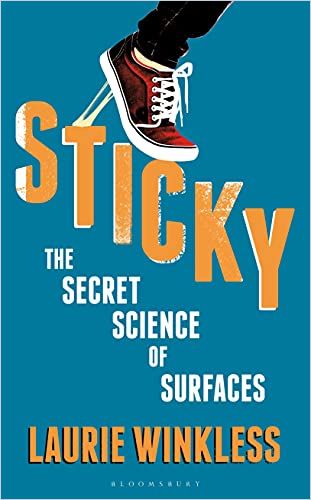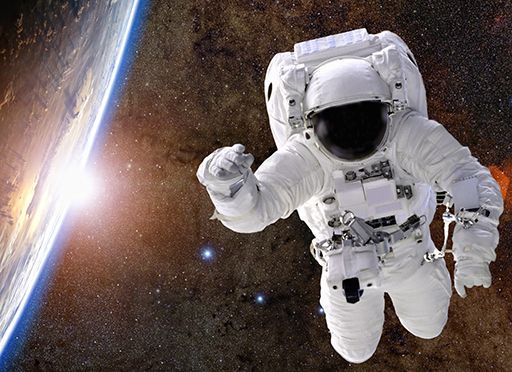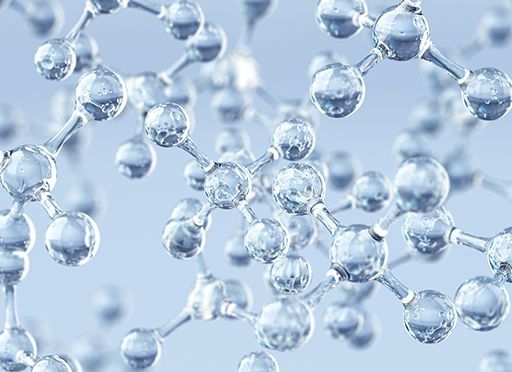Physicist Laurie Winkless details the myriad fascinating ways things, animals, paints and socks stick together or resist friction.

Geckos Rule
Physicist Laurie Winkless presents an original, eye-opening review of how surface stickiness or slipperiness affect your every waking moment. Winkless’s examples include swimming, skating, driving and your socks. Winkless revels in the relevance and application of an arcane science, tribology. Winkless occasionally offers more detail than you might want, but her revelations will surprise, delight and enlighten you.
Stickiness and Slipperiness
Scientists who study friction are tribologists. Friction generates grip when increased and glide when reduced. In 2000 BC, Egyptian logisticians experimented to find the precise amount of water to add to sand to reduce the friction of moving massive stone monuments across the desert.
Mu
The lower the mu, the less friction. For example, your car tires on asphalt have a high mu, which keeps your car on the road. A metal skate blade on ice produces a low mu, which lets you glide while producing enough grip to keep you upright. The manipulation of friction – increasing with sticky glues and reducing with lubricants – represents a combined $200 billion annual expenditure worldwide.
If you don’t get surface wetting you will not get adhesion. It’s as simple as that.Laurie Winkless
Ocher, for example, has remained stuck to cave walls for at least the past 20,000 years. This paint’s adhesive resilience remains a mystery, even to the world’s leading-edge paint chemists.
Chemists create different paints for different surfaces. Their formulas rely on knowledge of the surface the paint must adhere to, and on the requisite “binders” – chemical reactions. Smooth surfaces resist adhesion, while rough, clean ones assist it; sanding and cleaning a surface before painting results in better coverage.
Ice
The optimal ice temperature for skating is -7ºC, well below freezing and too cold for the blade of a skate to melt ice. Like most solid surfaces, ice maintains a microscopic layer of liquid until temperatures approach -100ºC.
When ice is cold enough, it is not slippery at all; in fact, it’s a very high-friction surface.Laurie Winkless
Ice provides the greatest skating glide between -7ºC and -9ºC, at which point molecules in the water on the ice move about briskly, reducing friction. Speed skaters like their ice at -9ºC, the optimum for glide and speed. Because hockey players make fast stops and cuts, they prefer -6ºC. Figure skaters demand slightly softer ice (-3ºC), to gain more friction for jumps and turns.
Geckos
The superpowers of geckos exemplify adhesion in nature. Geckos’ feet feature millions of microscopic ridges, “lamellae,” covered in even tinier hairs. Geckos don’t utilize suckers, as naturalists once believed.
Geckos’ feet produce no adherent; they position their feet to generate incredible surface-area friction. Geckos change the angle of their feet to stick and unstick six times faster than you can blink your eye.
Gecko feet are the smartest on-off adhesive in the world.Laurie Winkless
Scientists do not entirely understand how geckos generate their grip. Items may adhere, to a degree, through diffusion of their molecules – as when your pasta sticks together. Other objects or surfaces appear to bind electrostatically, such as your socks sticking together. Scientists can’t fully explain adhesion.
Geckos have inspired inventions – from agile robots to tapes that allow researchers to climb walls vertically to “gecko grippers” that aid astronauts in space.
Marine Animals
Water creates enormous drag, which increases disproportionately the faster a swimmer travels through it. The more steady and streamlined swimmers hold their bodies, the more they reduce drag.
Whenever we examine biological systems in detail, we discover a daunting level of complexity.Laura Winkless
For the 2000 Sydney Olympics, Speedo designed a wetsuit that mimicked sharkskin. A shark’s skin contains millions of spiky “denticles” that face the direction of the water and reduce drag. Swimmers wearing the suits tended to win gold medals in Sydney and subsequent Olympics. Experiments found no meaningful differences in speed between the new suits and traditional gear.
Speedo’s newer suits add hydrophobic layers to repel water. Swimmers wearing these suits won virtually every available medal in the 2008 Beijing Olympics. The Olympics banned them and suits like them in 2010.
Air
The fluid molecules in air attach to objects moving through it, creating drag. The dimples in a golf ball repel those molecules and reduce friction. A smooth golf ball, for example, will go only half as far – when driven by the same force – as a dimpled one will travel. The seams on a baseball provide a raised surface area that interacts with moisture molecules in the air. This allows a pitcher to throw a curve ball.
No matter where you go on Earth, you are blanketed in a fluid.Laurie Winkless
As swimmers experience drag in water, so do planes in the sky. When planes experience turbulence, fluids in the air create eddies and swirls, increasing friction and unpredictable outcomes.
Advanced spy planes feature materials in their frames and surfaces that fight the attachment of molecules that create friction and drag. Conversely, the materials and shields on space vehicles increase friction. They slow spacecraft, preventing them from burning up as they hit Earth’s atmosphere.
Rubber
You want more friction when you go fast around a bend or through rain or snow. You want less friction to drive or bike faster using less fuel or energy. Optimally, you command grip and speed. Tires made of rubber, a miracle substance, repel water and snow and can provide friction on ice.
Skin
Hairy skin covers about 90% of your body, but not your fingers and palms, which are especially sensitive.
Our fingertips can distinguish between smooth surfaces that are identical, save for a single atom substitution.Laurie Winkless
Fingerprints, wrinkles and sweat glands enable you to grasp slippery materials. Ridges and moisture generate friction and stickiness. Too much sweat, and you lose grip.
Hold on Tight
Remember when science was fun? Well, neither does anybody else, except scientists (and geeks). Laurie Winkless provides an enormous service by making science truly fun, and engrossing reading as well. She burrows –perhaps too deeply – into a world few explore and offers fascinating tidbits that will stick in your brain. Her breezy, conversational style belies the classic stereotype of the austere scientist; this is fun for her, too. Immersing and educational for students, teachers, adults and children.
Laurie Winkless also wrote Science and the City.







